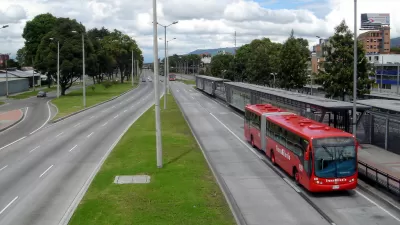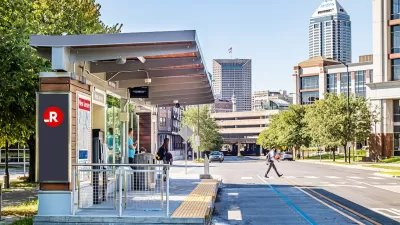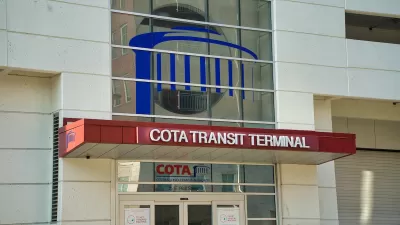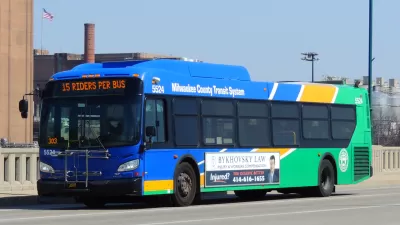Changes to the BRTData.org criteria means fewer systems and corridors are considered to bus rapid transit.

Paula Tanscheit and Virginia Tavares report that BRTData.org, the most comprehensive online database of bus rapid transit in the world, has updated its criteria to "align its corridor definition with the benchmarks and quality standards established by the Institute for Transportation and Development Policy." As BRTData.org has grown, "a need to establish stricter quality standards has become apparent," according to the article. The hope in making the change is also to do a better job evaluating quality of service.
Following their recommendations, from now on, BRT corridors will be defined as one or more contiguous lanes served by one or multiple bus lines with a minimum length of three kilometers that has segregated or exclusive bus lanes. If the segregated lane is aligned to the curb, at least one of the following elements must be present: (1) prepayment of the tariff; (2) priority traffic signaling; (3) a boarding level or (4) a unique brand and logo.
Those changes mean 96 systems and corridors previously in the database are no longer included, although the post stops short of calling them out by name.
FULL STORY: BRTData Enhances Indicators to Improve Accuracy and Comparisons

Manufactured Crisis: Losing the Nation’s Largest Source of Unsubsidized Affordable Housing
Manufactured housing communities have long been an affordable housing option for millions of people living in the U.S., but that affordability is disappearing rapidly. How did we get here?

Americans May Be Stuck — But Why?
Americans are moving a lot less than they once did, and that is a problem. While Yoni Applebaum, in his highly-publicized article Stuck, gets the reasons badly wrong, it's still important to ask: why are we moving so much less than before?

Using Old Oil and Gas Wells for Green Energy Storage
Penn State researchers have found that repurposing abandoned oil and gas wells for geothermal-assisted compressed-air energy storage can boost efficiency, reduce environmental risks, and support clean energy and job transitions.

Greening Oakland’s School Grounds
With help from community partners like the Trust for Public Land, Oakland Unified School District is turning barren, asphalt-covered schoolyards into vibrant, green spaces that support outdoor learning, play, and student well-being.

California Governor Suspends CEQA Reviews for Utilities in Fire Areas
Utility restoration efforts in areas affected by the January wildfires in Los Angeles will be exempt from environmental regulations to speed up the rebuilding of essential infrastructure.

Native American Communities Prepare to Lead on Environmental Stewardship
In the face of federal threats to public lands and conservation efforts, indigenous groups continue to model nature-centered conservation efforts.
Urban Design for Planners 1: Software Tools
This six-course series explores essential urban design concepts using open source software and equips planners with the tools they need to participate fully in the urban design process.
Planning for Universal Design
Learn the tools for implementing Universal Design in planning regulations.
Heyer Gruel & Associates PA
City of Moreno Valley
Institute for Housing and Urban Development Studies (IHS)
City of Grandview
Harvard GSD Executive Education
Salt Lake City
NYU Wagner Graduate School of Public Service
City of Cambridge, Maryland





























